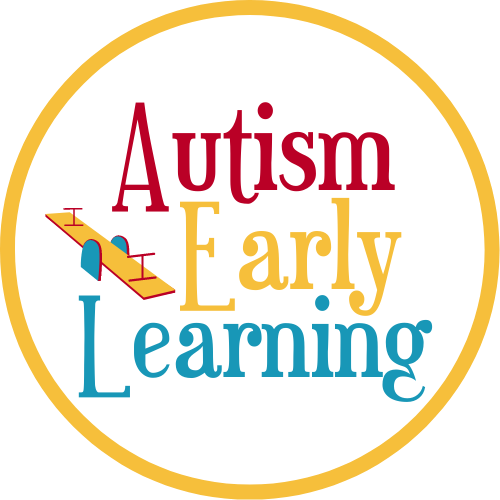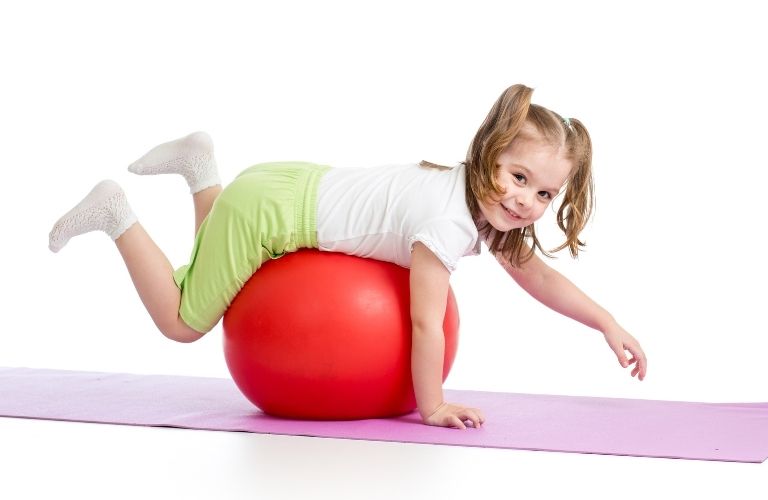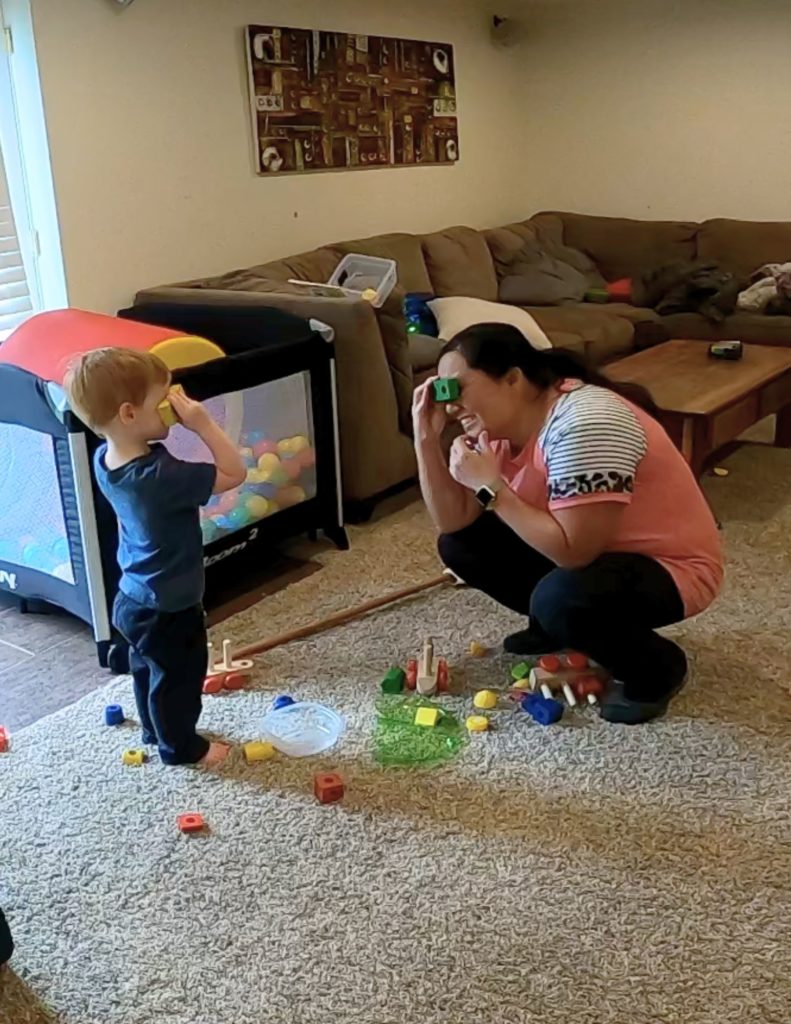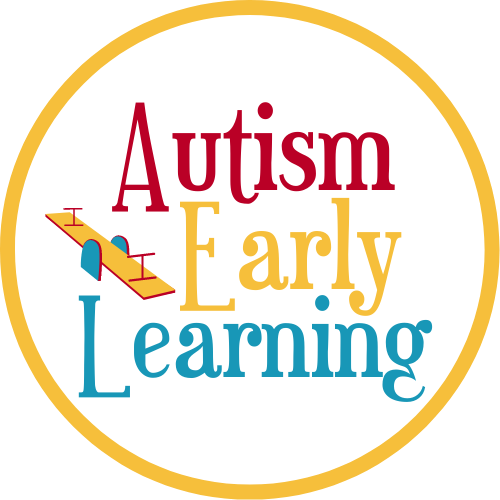Using an exercise ball when working with a child with autism that struggles with engagement is one of my favorite go to activities. This is a great activity IF your child enjoys vestibular or proprioceptive input. If your child avoids these types of activities, you can still try it, but you’ll need to be sensitive to your child’s preferences and go at a much slower pace
I have found that using a lot of sensory motor activities not only increases engagement (because it’s fun!) but it also increases communication and motivation.
I’ve had several kids I’ve worked with that have started initiating (opening circles) more and using more words just from doing activities like bouncing on a ball.
What you want to do first is create some type of sequence or routine. For example if your child likes to sit on top of the ball and have you bounce him, then do that. The sequence may look something like this:
- Put your child on the ball and say “up” or “on”
- Say “1,2,3, Go”
- Start bouncing
- Sing a song or just melodically and rhythmically say “bounce, bounce, bounce”
- Say “stop” and stop bouncing
- Take your child off the ball
If this is the first time you’re doing the activity, then set up the sequence by doing it several times until you know your child is engaged and wants more. Once your child is fully engaged, then the next time you finish the sequence just wait. Don’t say anything, just use facial expressions.
As soon as your child does anything to indicate he wants more, then put him on the ball. This can be anything, your child may use a full sentence to ask more, or your child may try to get on the ball by himself. Whatever your child does, don’t discount it. This is communication.
Sometimes adults will discount a child’s attempt at communication just because it’s not how the adult wants the child to do it. Please don’t do this. Our goal with this activity is to get more and more circles of communication (initiating and responding). If you ignore your child’s attempt to communicate, you’re stopping the flow and thus forfeiting him the chance to increase those circles.
As your child increases his consecutive circles of communication, and as his motivation increases, you just might hear more verbal words as well.
Below I am including a portion of this activity from the Activity Library that I am currently creating. If you would like full access to this activity you can purchase it below. It includes a video lesson that goes along with this lesson as well as more tips and techniques you can use to get more engagement. I also go over other developmental skills that you can target while using an exercise ball.
I hope you and your child (or the kids you work with…I know you call them your kids too) enjoy this activity!
Supplies
- Exercise Ball
Instructions
There are so many ways to play with an exercise ball, here are just a few:
- Bounce your child on the ball
- Bounce the ball on your child
- Sing Row your boat on the ball with different actions. Row your boat, bounce your boat, sway your boat, wiggle your boat, tickle your boat, etc.
- Roll the ball to each other
- Roll the ball down the stairs or down a slide
- Give your child a massage by rolling the ball on him
- Have your child lay on her stomach while you roll the ball
- Bounce a stuffed animal on the ball
- Pretend the ball is chasing your child
Extra Tips & Ideas
- You can use an exercise ball to address different areas of development. I'll get more specific in the sections below.
- The great thing about having an activity that has so many different ways to play, is you can use that to increase engagement, creativity, and fun.
- Make a list of all the things you can do with an exercise ball before you start to play so that you don't have to figure it out in the moment. (This is called Theme and Variation)
- Let your child decide how you're going to play with the ball, and follow his lead.
Access The Full Tutorial
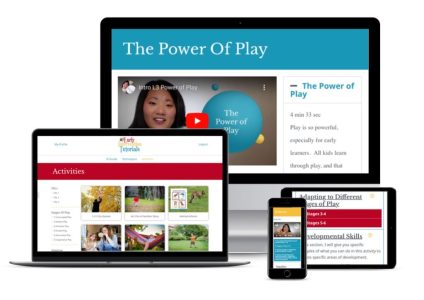
To gain full access to this tutorial and 70+ other activity and technique tutorials, become a member of The Early Intervention Tutorials
As a member of the EI Tutorials, you will learn how to:
- Identify a child’s developmental level
- Understand the stages of play
- Learn how to help a child with limited play skills
- Implement specific techniques to increase communication and engagement
- Adapt activities to different stages of development
- Target specific developmental skills, including: communication skills, cognitive skills, executive functioning, motor skills, social skills, and adaptive skills
Adapting to Different Stages of Play
Depending on a child’s stage of development, you’ll want to adapt this activity based on goals that would be appropriate for the child’s growth.
The stages of play are:
- Stage 1: Unoccupied Play
- Stage 2: Solitary Play
- Stage 3: Onlooker Play
- Stage 4: Parallel Play
- Stage 5: Associative Play
- Stage 6: Cooperative Play
I’ll share ideas on how to do this in the Early Intervention Tutorials. You can become a member and gain access to this tutorial by going to: https://autismearlylearning.com/ei-tutorials-info/
Developmental Skills
In this section, I’ll identify which areas of development this activity targets. I’ll also give some pointers on how to specifically target each area. You can become a member of the Early Intervention Tutorials by going to: https://autismearlylearning.com/ei-tutorials-info/
Download
- Printable Lesson Plan (only available in the Early Intervention Tutorials)
